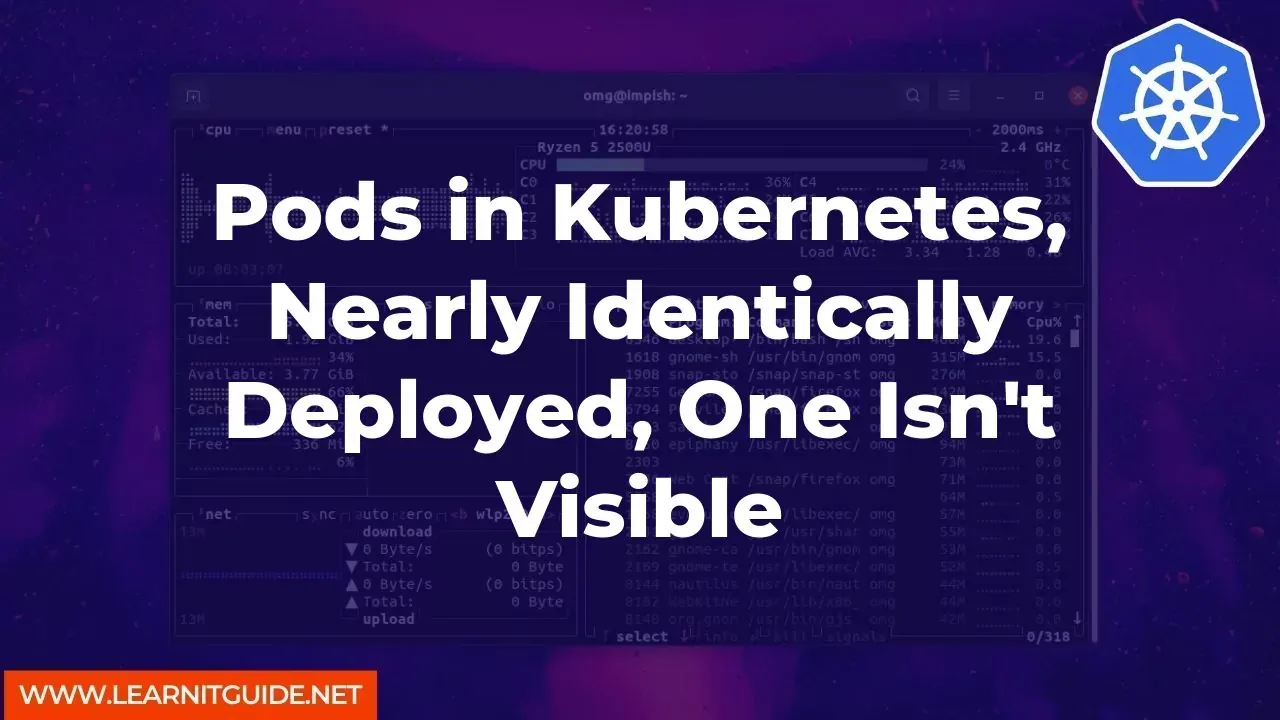Kubernetes is a popular container orchestration platform used to deploy and manage containerized applications at scale. In Kubernetes, a pod is the smallest deployable unit that represents a single instance of a running process. Pods are used to run one or more containers and are managed by the Kubernetes API server.
In this article, we'll discuss a scenario where two pods are nearly identically deployed, but one of them is not visible in the Kubernetes cluster.
- Checking the Pod Status
The first step is to check the status of the pod that is not visible in the cluster. You can use the following command to get the list of all the pods in the cluster:
kubectl get pods
This command will list all the pods running in the current namespace along with their status. If the pod that you are looking for is not visible in the output, it means that it is not running in the cluster.
- Checking the Pod YAML
The next step is to check the YAML file used to deploy the pods. You can use the following command to get the YAML file for the pod:
kubectl get pod <pod-name> -o yaml
Replace <pod-name> with the name of the pod that is not visible in the cluster. This command will output the YAML file used to deploy the pod. You should compare this YAML file with the YAML file used to deploy the visible pod.
- Checking the Labels
In Kubernetes, pods are usually deployed with labels, which are key-value pairs used to identify and select objects. You should check the labels used to deploy the pods to ensure that they are identical. You can use the following command to get the labels for the pod:
kubectl describe pod <pod-name>
Replace <pod-name> with the name of the pod that is not visible in the cluster. This command will output detailed information about the pod, including its labels.
- Checking the Nodes
Each pod in Kubernetes is deployed to a node, which is a worker machine in the cluster. You should check the nodes where the visible and non-visible pods are running to ensure that they are the same. You can use the following command to get the node information for the pods:
kubectl describe pod <pod-name>
Replace <pod-name> with the name of the pod that is not visible in the cluster. This command will output detailed information about the pod, including the name of the node where it is running.
- Checking the Namespace
Finally, you should check the namespace where the pods are deployed. Kubernetes supports multiple namespaces, which are used to organize and isolate objects in the cluster. You can use the following command to get the namespace information for the pods:
kubectl describe pod <pod-name>
Replace <pod-name> with the name of the pod that is not visible in the cluster. This command will output detailed information about the pod, including the namespace where it is deployed.
If you have followed all these steps and still cannot find the reason why one of the pods is not visible in the cluster, you should check the logs for the pod and investigate any errors or warnings reported.
So, Kubernetes is a powerful platform for managing containerized applications at scale. When deploying pods, it is essential to ensure that they are identical in every aspect, including labels, nodes, and namespaces. By following the steps outlined in this article, you can easily identify and resolve issues with pods that are not visible in the Kubernetes cluster.
Related Searches and Questions asked:
That's it for this post. Keep practicing and have fun. Leave your comments if any.








0 Comments